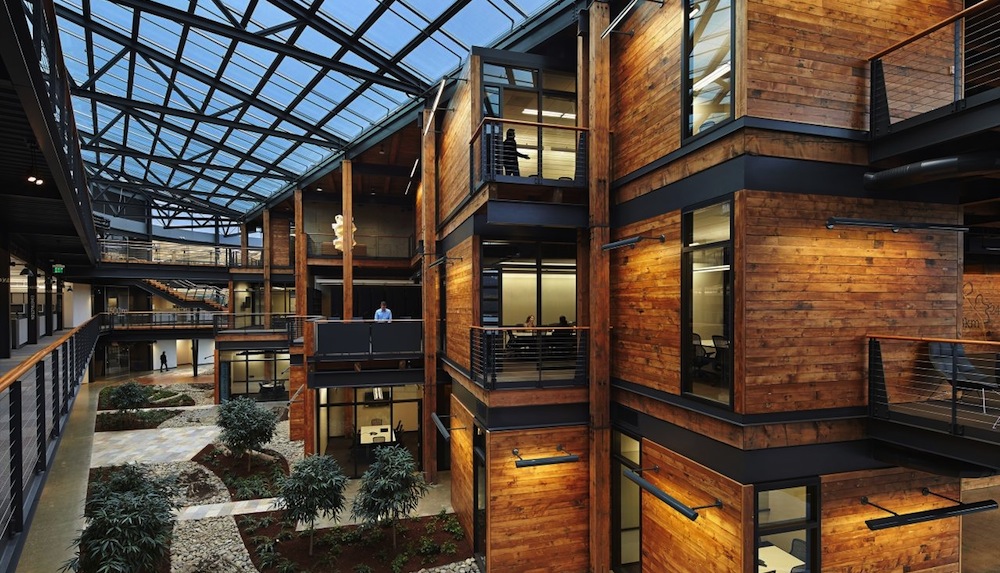Each year, the American Institute of Architects (AIA) selects the ten best green buildings. Since this will be the report’s 20th year, the organization has a large enough sample size to find some key takeaways from the projects it has recognized.
"Lessons from the Leading Edge" is a study of the 200 Committee on the Environment (COTE) Top Ten Award winning projects since 1997. The report tracks energy efficiency, water conservation, and indoor environmental quality and evaluates design quality and environmental performance.
“Top Ten winners are an extraordinary group of case studies from the leading edge of sustainable design over the past two decades,” Lance Hosey, FAIA, lead author of the report and a member of the COTE Advisory Group, said in a statement. “The projects have been studied and published widely as individual projects, but never as a group—until now. What we found is that Top Ten winners are outpacing the industry by virtually every standard of performance, but they also exemplify the integration of design excellence and sustainable performance.”
The report offered recommendations for architects (“Drive greater awareness of the health impact of building materials and need for better indoor air quality,” for example) and it noted green projects trends. Projects effectively reduce water and often exceed AIA 2030 Commitment targets for energy savings. They tend to be located in urban areas and skew more towards the West Coast of North America.
"Lessons from the Leading Edge" is being released before the 2016 Top Ten Green Project awards, which will be announced April 22.
Related Stories
| Sep 12, 2011
PVs play new roles as a teaching tool
Solar installations are helping K-12 schools around the country save money and teach students the intricacies of renewable energy sources.
| Sep 12, 2011
Living Buildings: Are AEC Firms up to the Challenge?
Modular Architecture > You’ve done a LEED Gold or two, maybe even a LEED Platinum. But are you and your firm ready to take on the Living Building Challenge? Think twice before you say yes.
| Sep 12, 2011
Putting a stamp on USPS's first green roof
The Morgan Building roof totals 150,000-sf. In addition to a vegetated green roof, other roof areas were upgraded and included 55,000-sf of reflective concrete pavers and ballast, which were also placed over a Sarnafil waterproofing membrane, and 40,000-sf of EnergySmart Roof—a reflective, energy-efficient vinyl roofing system from Sika Sarnafil.
| May 18, 2011
Carnegie Hall vaults into the 21st century with a $200 million renovation
Historic Carnegie Hall in New York City is in the midst of a major $200 million renovation that will bring the building up to contemporary standards, increase educational and backstage space, and target LEED Silver.
| May 16, 2011
Seattle unveils program to boost building efficiency
Seattle launched a new program that will help commercial property owners and managers assess and improve building energy efficiency. Under the program, all commercial and multifamily buildings larger than 10,000 sq. ft. will be measured for their energy performance using the EPA’s ENERGY STAR Portfolio Manager.
| May 10, 2011
Are green goals out of reach for federal buildings?
Many federal agencies are struggling to convert their existing buildings to meet green standards, according to the Office of Management and Budget. Of 20 agencies graded by the OMB on their compliance with green mandates, only seven met the 2010 mandate that requires at least 5% of their buildings meet energy-efficient and sustainable standards.
| Apr 14, 2011
U.S. embassies on a mission to green the world's buildings
The U.S. is putting greater emphasis on greening its worldwide portfolio of embassies. The U.S. State Department-affiliated League of Green Embassies already has 70 U.S. embassies undergoing efforts to reduce their environmental impact, and the organization plans to increase that number to more than 100 by the end of the year.
| Feb 7, 2011
GSA Unveils New Sustainable Workplace Design Tool
The U.S. General Services Administration launched its Sustainable Facilities Tool on Monday, Feb. 7. The innovative online tool will make it easier for both government and private-sector property managers and developers to learn about and evaluate strategies to make workplaces more sustainable, helping to build and create jobs in America’s clean energy economy of the future.













